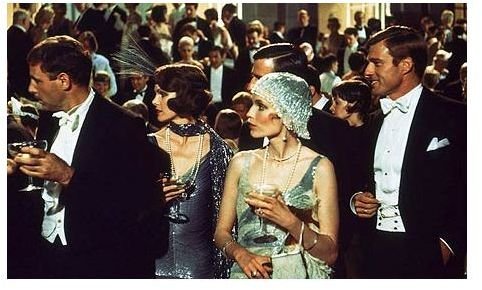Teaching on Themes in 'The Great Gatsby': High School Lesson Plan
Love, marriage, death, deception, and class warfare are the grist that feeds the soap opera and reality show mill. These same themes run through The Great Gatsby. As you teach your students to become active readers, they can trace these how these themes are developed and the ideas they believe F. Scott Fitzgerald intended to express. Students will learn how to use textual evidence to support their ideas and make connections to modern day society.
Lesson Objectives
Students will learn the definition and concept of “Theme” in a literary work. Through active reading strategies, guided practice, and discussion they will be able to trace a theme in a novel. They will be able to identify passages and direct quotes that develop a theme and support their own ideas about what message an author is trying to convey. Students will then draw connections between The Great Gatsby and modern-day television shows, movies, and books.
Materials Needed:
- A copy of The Great Gatsby for each student;
- A graphic organizer that includes the themes to be traced and a place for citing textual support and page numbers (optional).
Procedures
Students often have a difficult time grasping the abstract concept of “theme.’ Start by giving a mini-lesson on the definition of the term “theme” and discussing various books that the students have read or popular movies they have seen. Be sure to emphasize that the theme or themes of a work of literature is not the same as the moral. While the moral of a story is the lesson or message the author wants to convey, the theme is simply a central topic, subject, or idea that the author wants to explore. Themes usually cross cultural, social, and gender barriers and explore aspects of the common human experience.
Once students understand what a theme is, provide them with a list of the main themes in <em>The Great Gatsby</em> that will be traced by the students as they read the novel. Include Love, Society and Class, The American Dream, Deception and Lies, Death, and Marriage. It is helpful to give students a graphic organizer that has includes a place for writing a page number, passage, or direct quote on the theme and a place for their own interpretation or explanation of how the passage develops the theme. Depending on the level of students and their previous experience, a few examples can be provided. A list of common analysis sentence starters, such as, “This passage demonstrates…” or “This passage develops the idea that…” would also help students.

The organizer can also include a place to make a connection between the idea that is presented in the book and how it is thought of today. For example, in The Great Gatsby, infidelity in marriage is common. How acceptable is infidelity in marriage today?
Encourage students to complete the theme tracing activity as they read the book. The number of themes traced, number of examples required, and level of independence can be adapted for the needs of each particular class. Honors level students can trace all of the themes and give examples for each; whereas less advanced students can work on one theme and share their findings with one another in a group to gain further knowledge and understanding of each theme.
Assessment and Extension Activities
Class discussion and question and answer formats can be used to informally assess students’ understanding of the concepts. The students should be formally assessed on the completion of the graphic organizer. A rubric with the requirements should be provided when the assignment is given.
Formal writing assignments can serve as an extension of the concept of ‘Theme.’ Students can write an analysis essay on one of the themes and discuss how it is developed. Alternately, they can compare and contrast one of the themes from The Great Gatsby to modern-day society.
The enduring themes of The Great Gatsby can be presented to engage students and keep them interacting with the novel. Draw upon their personal experiences and perceptions of these themes in order to keep the story relevant to them today.
References
- Images from the 1974 film via http://leeslookbook.blogspot.com/2011/07/great-gatsby.html
This post is part of the series: Teaching “The Great Gatsby”
This series of lesson plans will get your students excited and interested in “the Roaring 20’s”. Enjoy!
